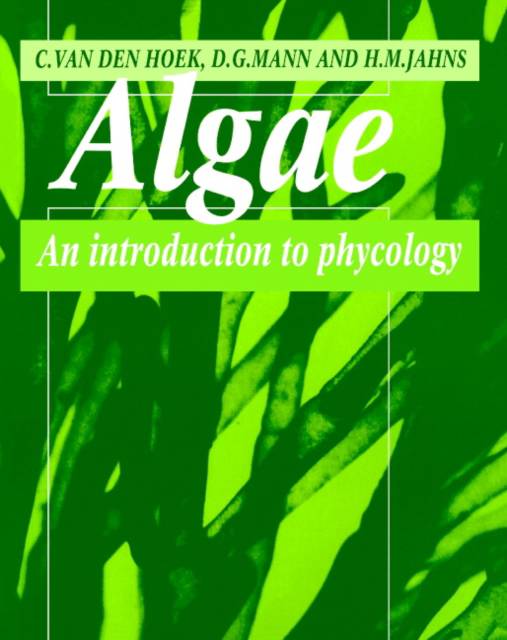
- Afhalen na 1 uur in een winkel met voorraad
- Gratis thuislevering in België vanaf € 30
- Ruim aanbod met 7 miljoen producten
- Afhalen na 1 uur in een winkel met voorraad
- Gratis thuislevering in België vanaf € 30
- Ruim aanbod met 7 miljoen producten
Zoeken
Algae
An Introduction to Phycology
Christian Van Den Hoek, H Martin Jahns, C Van Den Hoek
Paperback | Engels
€ 188,95
+ 377 punten
Uitvoering
Omschrijving
Algae are ubiquitous; a multitude of species ranging from microscopic unicells to gigantic kelps inhabit the world's oceans, freshwater bodies, soils, rocks, and trees, and are responsible for most of the global production of organic matter by photosynthesis. They thus play a fundamental role in the world's ecosystems and a reliable and modern introduction to their kaleidoscopic diversity, systematics, and phylogeny is indispensable. In this textbook, the main groups of algae (divisions or phyla) are considered in turn. Each chapter begins with a summary of the principal characteristics of the group and interesting aspects of ecology and evolution. The final chapter is a synthesis, in which the phylogeny of the algae is discussed in relation to the evolution of other living organisms, primarily on the basis of evidence from recent molecular studies. This book is the completely revised and updated edition of a highly acclaimed German work, which was heralded for its clarity as well as its breadth and depth of information. This new edition takes into account recent reevaluations in algal systematics and phylogeny provided by the powerful techniques of molecular genetics and electron microscopy, as well as more traditional life history studies. The book will be appropriate as an undergraduate text and as a reference for professionals in the field.
Specificaties
Betrokkenen
- Auteur(s):
- Uitgeverij:
Inhoud
- Aantal bladzijden:
- 640
- Taal:
- Engels
Eigenschappen
- Productcode (EAN):
- 9780521316873
- Verschijningsdatum:
- 7/03/1996
- Uitvoering:
- Paperback
- Formaat:
- Trade paperback (VS)
- Afmetingen:
- 185 mm x 239 mm
- Gewicht:
- 1079 g

Alleen bij Standaard Boekhandel
+ 377 punten op je klantenkaart van Standaard Boekhandel
Beoordelingen
We publiceren alleen reviews die voldoen aan de voorwaarden voor reviews. Bekijk onze voorwaarden voor reviews.








